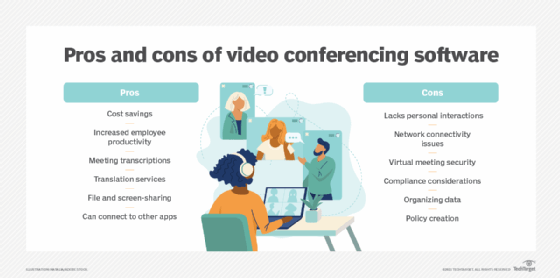The Benefits of Video Conferencing for Global Businesses
- By -Mash
- Posted on
- Posted in Video Conferencing
In an increasingly interconnected world, global businesses face the challenge of managing teams and operations across various time zones and locations. Video conferencing has emerged as a vital tool in overcoming these challenges, offering numerous benefits that enhance communication, collaboration, and efficiency. This article explores the key benefits of video conferencing for global businesses and how it can transform the way organizations operate on a global scale.

Streamlined Communication Across Borders
Video conferencing facilitates seamless communication between team members and stakeholders located around the world. By enabling real-time video and audio interactions, businesses can bridge the gap created by geographical distances. This immediate and direct form of communication reduces the likelihood of misunderstandings and ensures that important messages are conveyed accurately.
Moreover, video conferencing allows for face-to-face meetings without the need for travel, which is particularly valuable for global businesses with teams spread across different continents. This capability ensures that all participants can engage in discussions, provide input, and make decisions collaboratively, regardless of their physical location.
Enhanced Collaboration and Productivity
Collaboration is crucial for global businesses, and video conferencing provides a platform that supports effective teamwork. With features such as screen sharing, virtual whiteboards, and collaborative document editing, team members can work together in real-time, just as they would in a physical meeting room. These tools enable participants to present ideas, review documents, and brainstorm solutions more efficiently.
Additionally, video conferencing promotes productivity by reducing the need for lengthy email chains or multiple communication platforms. Instead, teams can connect instantly for discussions, updates, and problem-solving, which accelerates decision-making and project progress. The ability to record meetings also ensures that key points are captured and can be revisited as needed.
Cost Savings and Environmental Benefits
One of the significant advantages of video conferencing for global businesses is the reduction in travel costs. Traditional business travel, including flights, accommodations, and meals, can be expensive and time-consuming. Video conferencing eliminates the need for travel, allowing team members to participate in meetings without incurring additional expenses.
In addition to cost savings, video conferencing contributes to environmental sustainability. By reducing the need for travel, businesses can decrease their carbon footprint and support eco-friendly practices. This aligns with the growing emphasis on corporate social responsibility and environmental stewardship.
Flexibility and Accessibility
Global businesses often operate across multiple time zones, which can pose challenges for scheduling meetings. Video conferencing offers flexibility by allowing participants to join meetings from any location and device, whether it be a computer, tablet, or smartphone. This flexibility ensures that team members can attend meetings regardless of their time zone or geographical location.
Furthermore, video conferencing platforms typically offer features such as time zone converters and scheduling tools to help coordinate meetings across different regions. This capability simplifies the process of arranging meetings and ensures that all relevant parties can participate, regardless of their time zone.
Strengthened Team Relationships
Maintaining strong relationships within a global team can be challenging due to physical distances. Video conferencing helps strengthen these relationships by providing a platform for regular, face-to-face interactions. Seeing colleagues’ expressions and body language fosters a sense of connection and camaraderie, which can enhance team cohesion and morale.
Regular video meetings also allow for informal interactions, such as virtual coffee breaks or team-building activities, which contribute to a positive team culture. These interactions help build trust and rapport among team members, leading to more effective collaboration and a stronger sense of belonging.
Improved Customer and Client Engagement
For global businesses, engaging with customers and clients across different regions is essential. Video conferencing provides a valuable tool for delivering personalized customer service, conducting virtual consultations, and hosting product demonstrations. This direct engagement helps build stronger relationships with clients and enhances their overall experience.
Additionally, video conferencing allows businesses to offer timely support and address customer inquiries more efficiently. By providing a platform for real-time interactions, companies can respond to customer needs promptly and effectively, leading to increased satisfaction and loyalty.
Conclusion
In conclusion, video conferencing offers numerous benefits for global businesses, including streamlined communication, enhanced collaboration, cost savings, and improved team relationships. By leveraging video conferencing technology, organizations can overcome the challenges of operating across multiple locations and time zones, leading to increased productivity and stronger global connections. Embracing video conferencing as a core component of your business strategy can help you stay competitive in the global marketplace and achieve long-term success.



